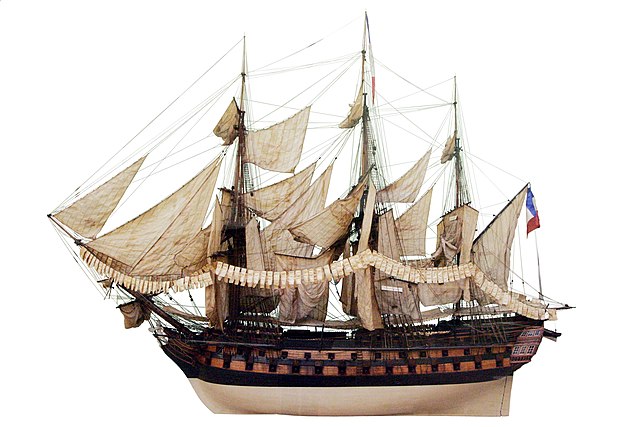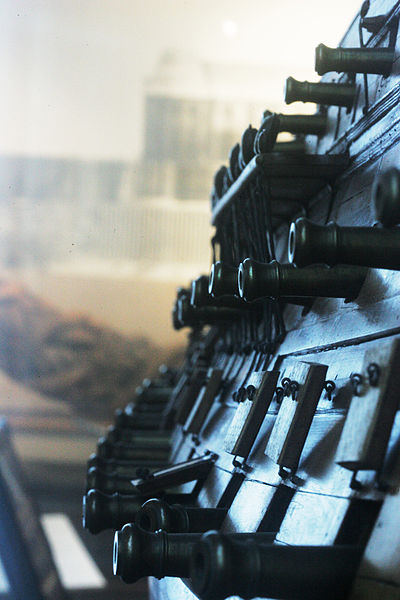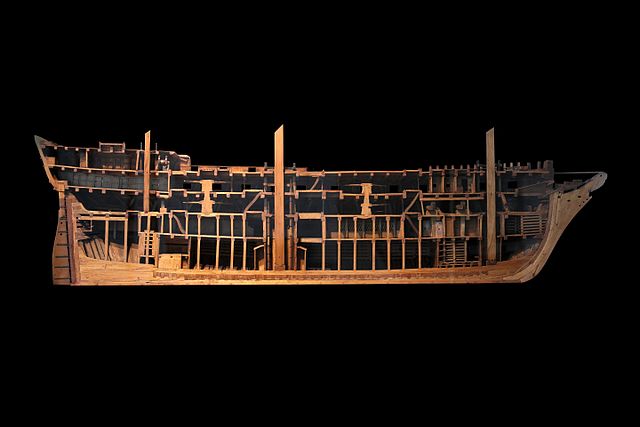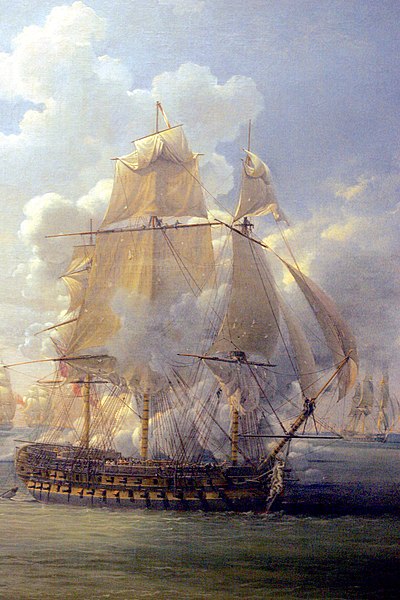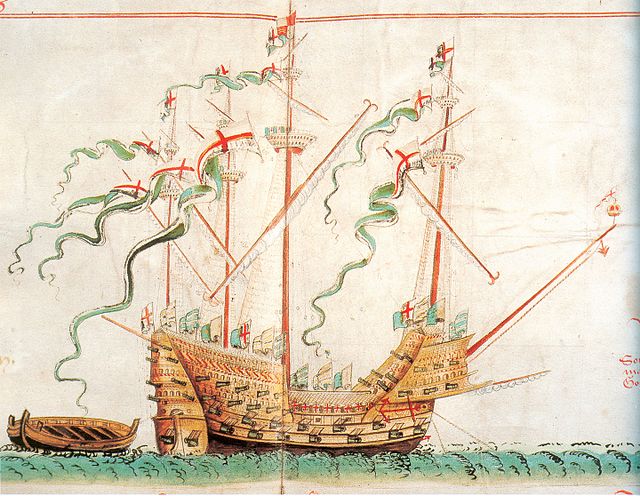The "seventy-four" was a type of two-decked sailing ship of the line, which nominally carried 74 guns. It was developed by the French navy in the 1740s, replacing earlier classes of 60- and 62-gun ships, as a larger complement to the recently developed 64-gun ships. Impressed with the performance of several captured French seventy-fours, the British Royal Navy quickly adopted similar designs, classing them as third rates. The type then spread to the Spanish, Dutch, Danish and Russian navies.
Scale model of Achille, a typical French seventy-four of the Téméraire class at the beginning of the 19th century.
Broadside of a French 74-gun ship from 1755 (1/24th scale model)
Inner arrangement of a Russian 74-gun ship. Elements of Sané's design are present, but with a British-style layout.
Geometric and scenographic projection of a Venetian 74-gun Leon Trionfante-class ship, late 18th century.
A ship of the line was a type of naval warship constructed during the Age of Sail from the 17th century to the mid-19th century. The ship of the line was designed for the naval tactic known as the line of battle, which involved the two columns of opposing warships maneuvering to volley fire with the cannons along their broadsides. In conflicts where opposing ships were both able to fire from their broadsides, the opponent with more cannons firing – and therefore more firepower – typically had an advantage.
A 1784 painting of French ship of the line Saint-Esprit by Nicholas Pocock
Two fleets in their line of battle during the Battle of Cuddalore
HMS Hercule as depicted in her fight against the frigate Poursuivante
The carrack Henri Grace à Dieu, from the Anthony Roll

